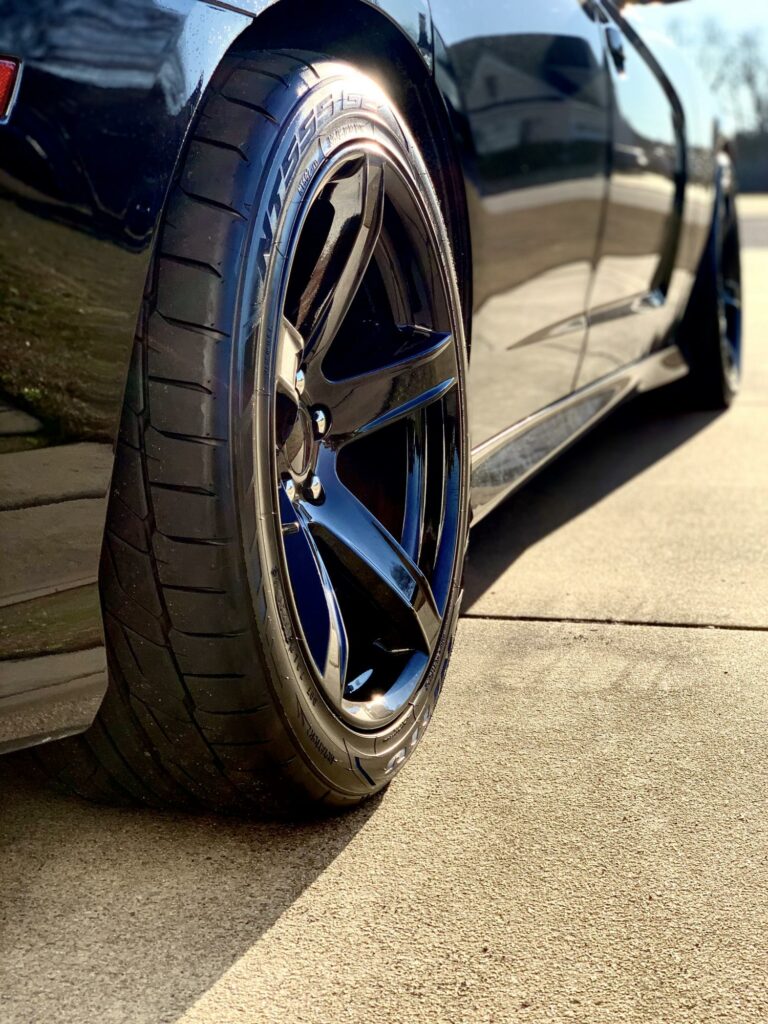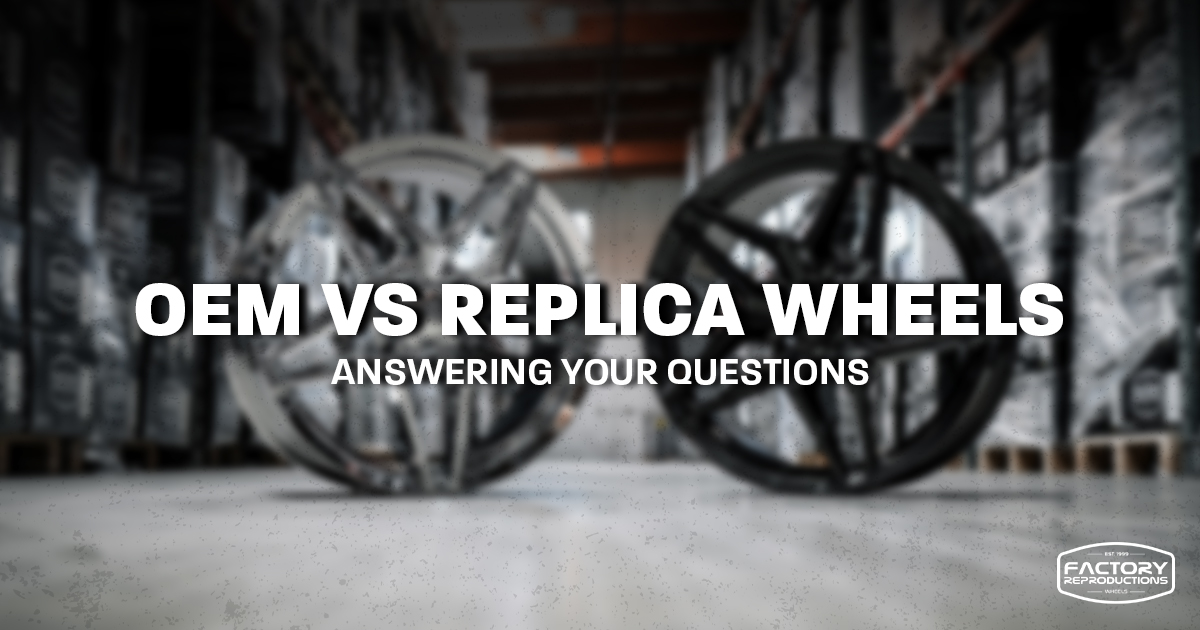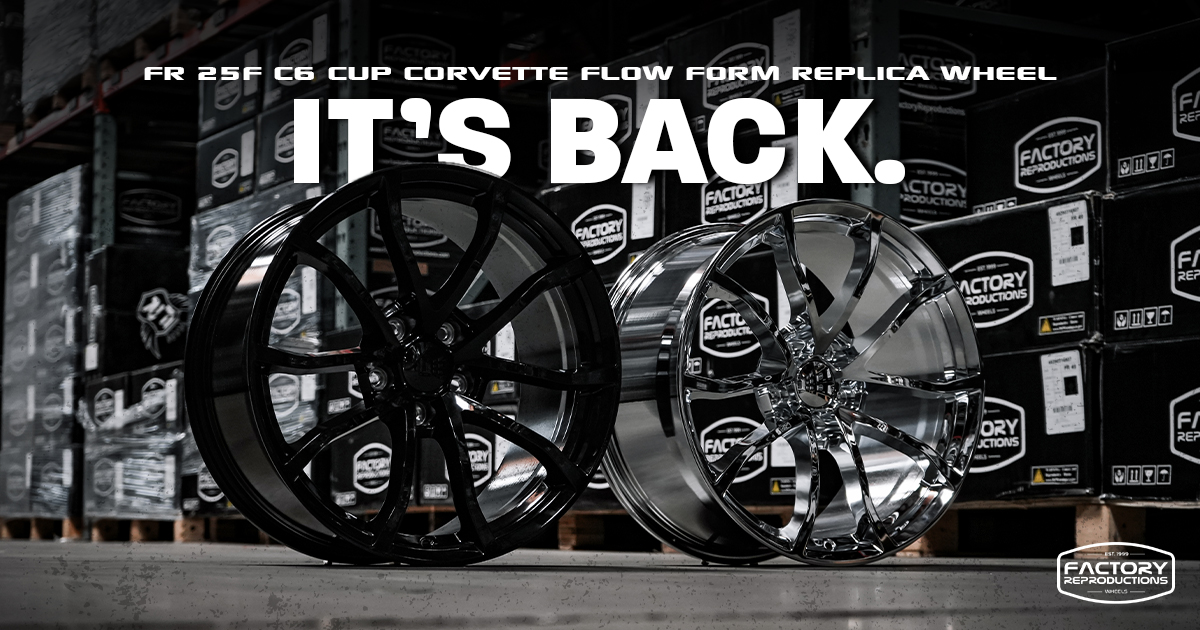How To Know If Rims Will Fit Your Car
One of the most frequently asked questions we hear at Factory Reproductions is: “Will these wheels fit my car?” There are several important factors to consider when answering questions about wheel fitment. At Factory Reproductions, we take the guesswork out of this complicated process for you. Our wheels are built specifically for the make and model of your vehicle.
However, If you are interested in better understanding fitment and how it applies to the wheels on your vehicle, our experienced team has defined the four critical elements.
Four Critical Elements to Consider When Calculating Fitment
- Bolt Pattern
- Wheel Backspacing
- Wheel Offset
- Plus Sizing or Up Sizing
1) Bolt Pattern
A vehicle’s bolt pattern consists of two components: the number of wheel studs and the centerline measurement of those wheel studs. For example, a 5×114.3 bolt pattern means there are 5 wheel lugs and the diameter of the centerline of the wheel studs measures 114.3mm. There are two different ways to measure the diameter depending on the number of lugs. If your vehicle has 4, 6, or 8 lugs, measure from the center of one wheel stud to the center of the opposing wheel stud. However, if you own a 5-lug vehicle, measure from the center of one stud to the outside of the farthest stud. (See diagram below)
How to Measure Wheel Bolt Patterns?
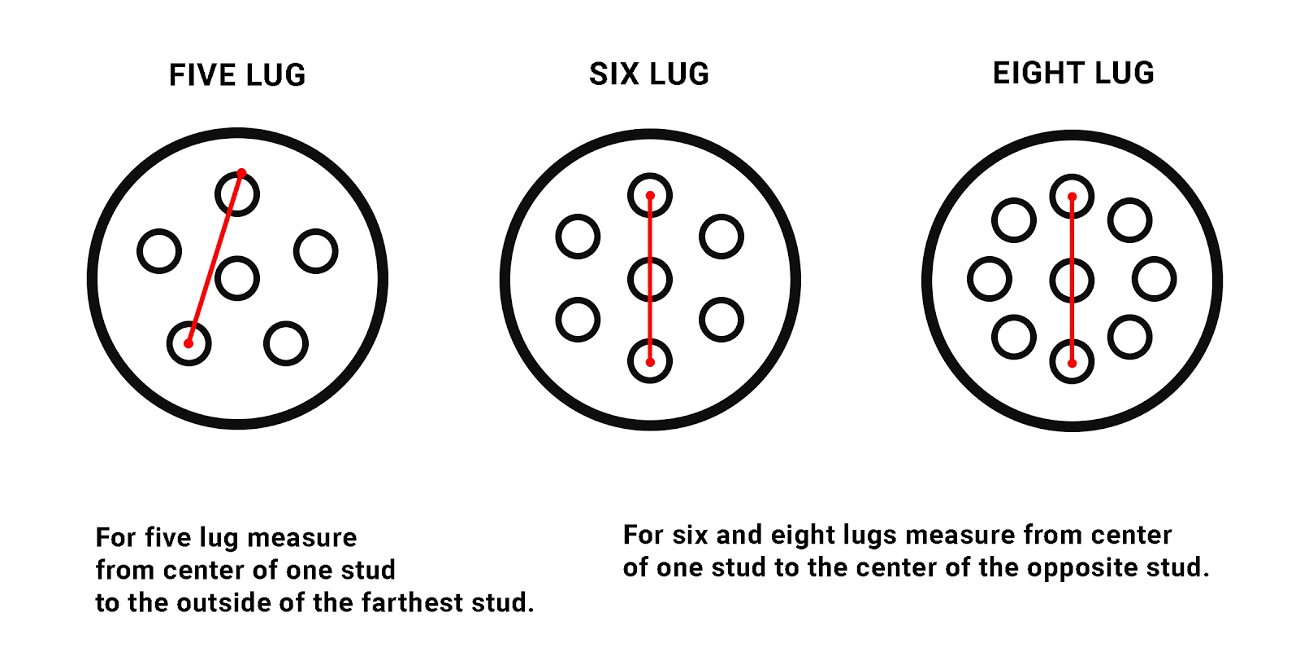
2) Wheel Backspacing
Backspacing is measured from the mounting surface of the wheel to the back of the wheel in inches. The larger the backspace of the wheel, the further it will sit back under the vehicle.
3) Wheel Offset
A wheel offset makes a big difference on how a wheel looks and performs on your vehicle. The offset is measured from the centerline to the mounting pad of the wheel and is calculated in either positive (+) or negative (-) millimeters. The more positive the offset, the more the wheel tucks into the wheel well. The more negative the offset, the more the wheel protrudes towards the fender. Generally in order to achieve a more aggressive stance, people choose to go with a more negative offset. The closer you get to zero, the more potential clearance issues arise with the vehicle’s fenders. If you can measure your back space and wheel width, you can find your offset conversion in the chart below.
Wheel Offset Conversion Chart
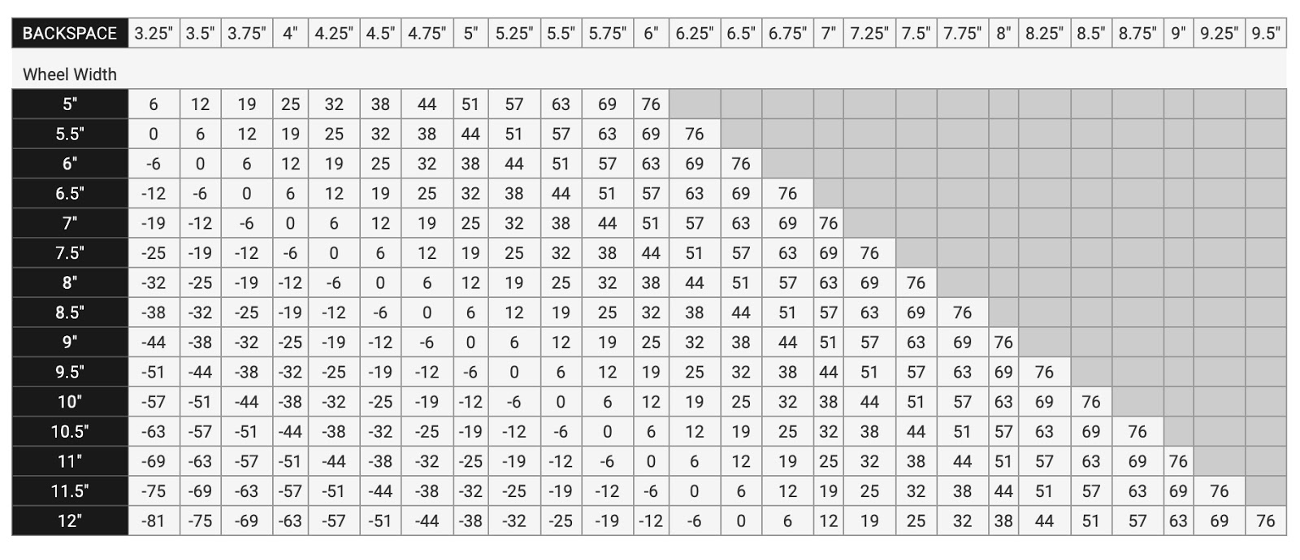
4) Plus Sizing or Up Sizing
Many vehicle owners want to increase the size of their wheels from the original stock size. This is called up or plus sizing. If you are going to increase the diameter of your wheel, you must remember to decrease the size of your tire in order to maintain the overall diameter of the stock wheel/tire setup. This will make sure you have enough clearance to avoid rubbing.
You’re Ready to Go
So there you have it! Fitment is taking these four critical elements into consideration and making sure that your dream wheels line up with what your vehicle will allow.
At Factory Reproductions, we believe getting that fitment perfect is the difference between a so-so set up and an amazing ride! If you are looking for some new wheels, and you have any questions about fitment, don’t hesitate to ask. Give us a call at (800) 824-2676 or get in touch with us through our website, and we’ll get back to you shortly.
